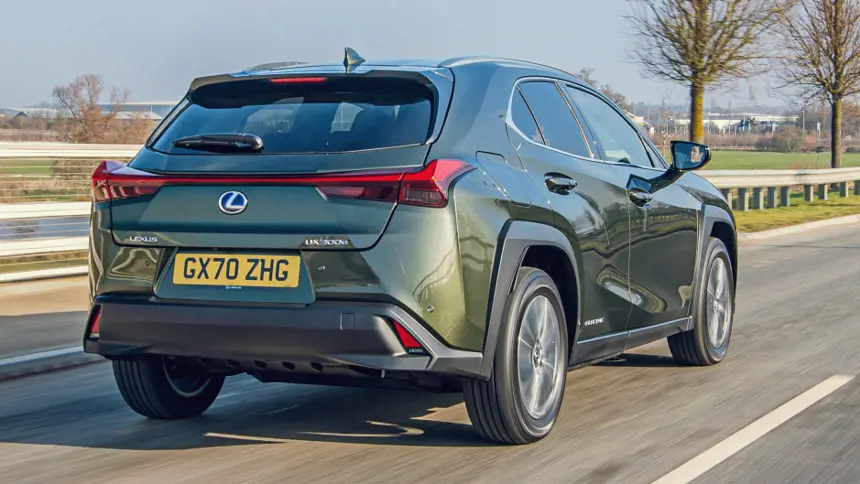What is regenerative braking?
Regenerative braking is an electric car feature that boosts efficiency and changes the way the car drives. Keep reading to find out more

Regenerative braking is a term that is being used with increasing frequency, with car makers appearing to assume that drivers automatically know what it means. However, since barely any cars featured anything more complicated than standard braking up until a few years ago, many motorists will have never experienced it.
Fear not, though, as regenerative braking is a useful feature that you can find on electric cars, plug-in hybrids (also known as PHEVs) and hybrids, which can help to maximise how far you can travel using electric power. Read on for everything you need to know about regenerative braking including how it works, which cars come with it and the main pros and cons.
Regenerative braking - often simply referred to as 'regen' - uses the car's electric motor (so is only featured on hybrid and electric models) to slow the car down, recouping energy that would otherwise be wasted when you lift off the accelerator. This can feel a bit alien when you're not used to it, but can make driving much easier once you've acclimatised.
If you are new to hybrid and electric cars - which are quickly becoming more and more common as both new and used cars - then you might want to check out a couple of other BuyaCar stories to work out which type of car works best for you.
What does regenerative braking actually mean?
Regenerative braking is an energy-saving feature found on cars with an electric motor - and is therefore only seen on hybrids, plug-in hybrids and electric models - where the electric motor is used to both slow down the car and regenerate (or recharge) its battery somewhat.
There's nothing more complex or sinister from the driver's point of view than that, though regenerative braking can change the way you drive, as you don't need to use the brake pedal as often, with the car slowing more quickly than cars without regenerative braking would do, when you lift off the accelerator.
Most cars with regenerative braking enable you to change how strongly the car slows down when you lift off the throttle. Set the car to slow more quickly and more energy will be added back to the battery. Meanwhile, if you opt for a weaker regenerative braking setting, the car will roll further when you ease off the accelerator, but less charge will be recouped.
How does regenerative braking work?

Regenerative braking works in the exact opposite way to how an electric motor works. To make an electric car move, a motor is fed with electricity which makes it spin and, as it is connected to the wheels, they then start to spin. This process uses electricity.
Flip that on its head, and if a car's wheels are spinning they can turn an electric motor which then sends electrons back to the battery pack. The process creates electricity. Electrons don’t go easily so there is some resistance to this process which is what creates a braking effect.
The faster the electrons are sent back to the battery, the greater the resistance, and the quicker a car will slow down. So, regenerative braking is completely separate from traditional braking which uses brake pads which rub against brake discs - creating friction - to slow a car down.
Cars which feature regenerative braking also have traditional brakes. This is a complex problem for car makers to solve, as the systems have to work together smoothly so that it is possible to stop safely and with a good level of control.
Car manufacturers such as Nissan and Hyundai have taken regenerative braking further by adding something called ‘one pedal’ driving. Nissan calls its system the 'e-Pedal'. This is where regenerative braking starts when the driver lifts their foot from the accelerator pedal rather than when they begin to press the brake pedal.
With a bit of planning, some cars can come to a complete stop safely and be driven off using only one pedal - the accelerator pedal. However, not all cars with regenerative braking will come to a complete stop, with some continuing to roll slowly. Furthermore, if you need to come to an emergency stop, you will still have to use the brake pedal to slow the car as quickly as possible.
How forceful regenerative braking works can sometimes be adjusted, depending on the make and model of car. One of the ways this can be done is using paddles behind the steering wheel (these are like the paddles used on some automatic cars to change gears) but it can sometimes be done using a button within easy reach of the driver or the touchscreen media system mounted on the dashboard.
In cars fitted with paddles, the driver can simply use one paddle to reduce the effect of regenerative braking and the other to increase its impact - depending how much braking force they wanted to apply. Although regenerative braking systems might sound complicated they are quite simple to use, once you understand what the car is doing.
Which cars come with regenerative braking?

As regenerative braking is primarily for recharging batteries, it is most common on hybrids and electric cars. Some car makers are working on regenerative braking for normal petrol and diesel cars but that is future technology for now, rather than something you'll find on everyday cars yet.
Mild hybrids only have a modicum of hybridisation, so although they can use regenerative braking, the impact isn't as profound. Moving on to traditional hybrids, by design these cannot be plugged in to charge, so regenerative braking can be especially beneficial, making the most of energy that would otherwise be lost through the traditional brakes creating lots of heat when slowing the car.
Then there are plug-in hybrids (PHEVs). These can make good use of regenerative braking just like traditional hybrids. Depending on the make and model, a PHEV should be able to travel between 25 and 45 miles or so from a full charge, when solely relying on the battery for power.
Last but not least we have electric cars. These come with the largest battery packs and the most powerful electric motors. In theory, more powerful electric motors should mean more electricity can be put back into the battery when braking, although how hard a driver brakes will also correlate to how much electricity is sent back to the battery.
What are the benefits of regenerative braking?

There are a number of benefits to regenerative braking with one of the best being financial savings. This is possible as regenerative braking can increase the battery-powered range of a hybrid or electric car and therefore reduce how much energy needs to be used on a journey.
As electricity is cheaper per mile than fossil fuels - such as petrol and diesel - savings can be made here. In addition to this, regenerative braking takes some of the load off the normal brakes which should extend the length of time that brake pads and discs could last - meaning you don't need to pay for new brakes as often.
Another benefit to regenerative braking is that it can make cars easier to drive through one-pedal driving. Mainstream electrified cars all use an automatic gearbox, so they are already pretty low effort to drive.
If you want to make driving even less arduous, you can look for cars with semi-autonomous technology such as adaptive cruise control and lane-keep assist and other autonomous driving technology, which can partly take over from the driver to control speed and steering.
What are the drawbacks of regenerative braking?

There are a couple of drawbacks to regenerative braking which are worth considering. The main one is complexity. This is thanks to the additional software and hardware required for regenerative braking. In truth, the difference is minimal as electrified cars already need most of the components used for regenerative braking to drive normally.
Another drawback to regenerative braking is that the systems may require a little getting used to - so if you don’t like change or want to feel the greatest sense of control, you may have a learning curve to get over and may not like how strong regenerative braking feels. If that's the case, reducing the strength of regen as much as possible, may make all the difference.
As mentioned above, though, regenerative braking systems are generally very easy to get to grips with, so the worst you can expect is to sometimes have jerky braking, when first getting the hang of the system and understanding how much braking force is applied as you ease off the accelerator.
